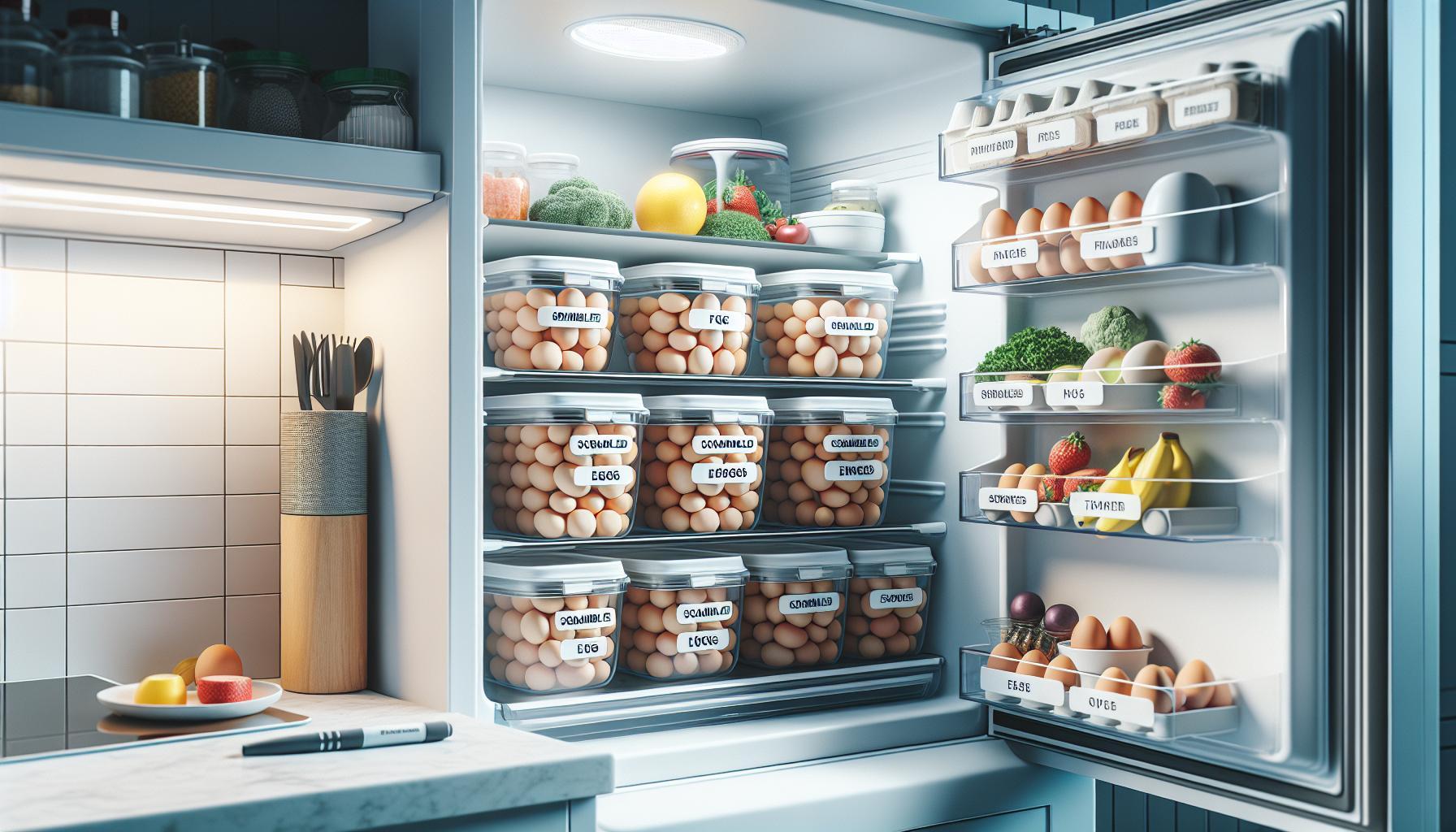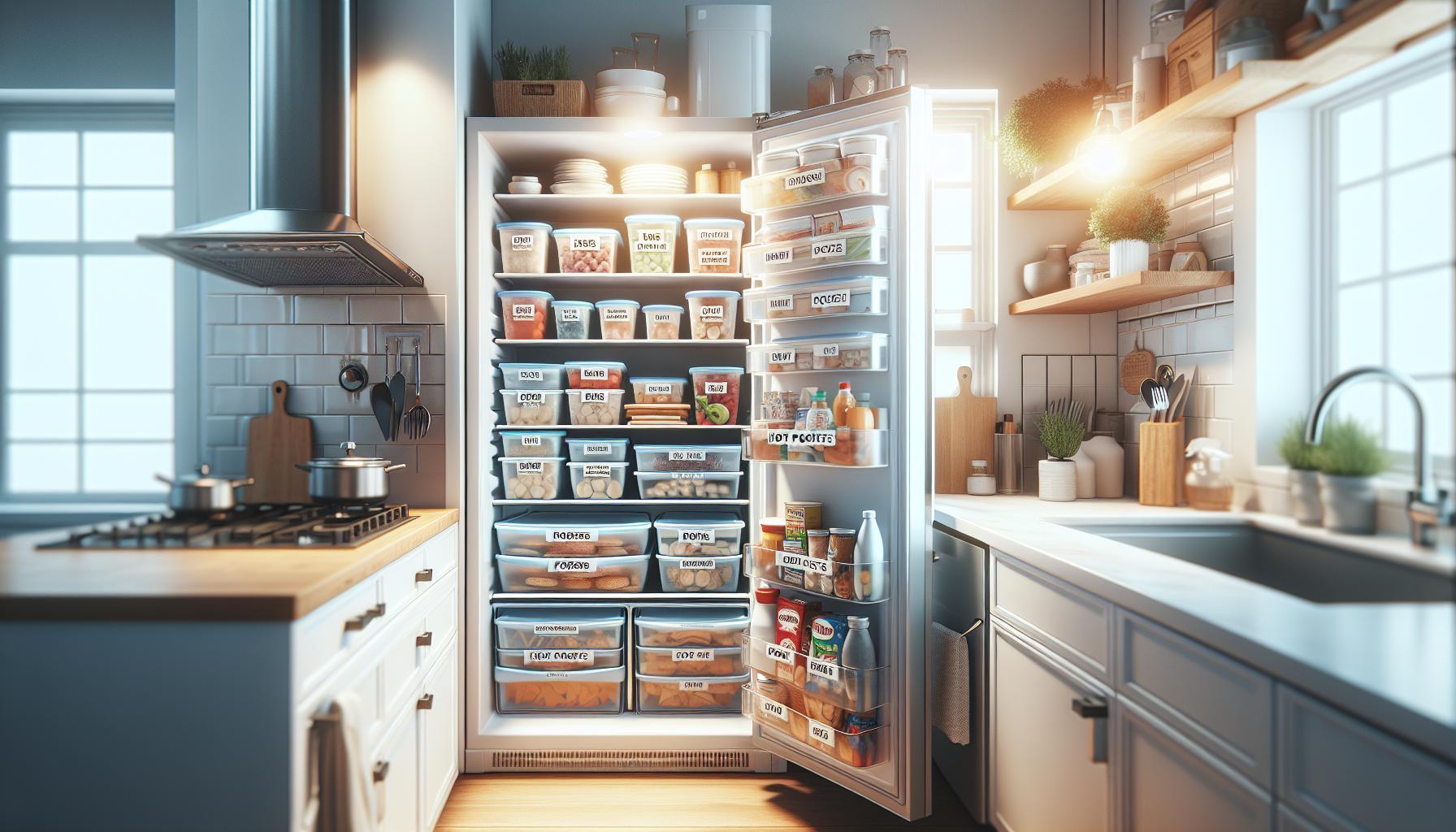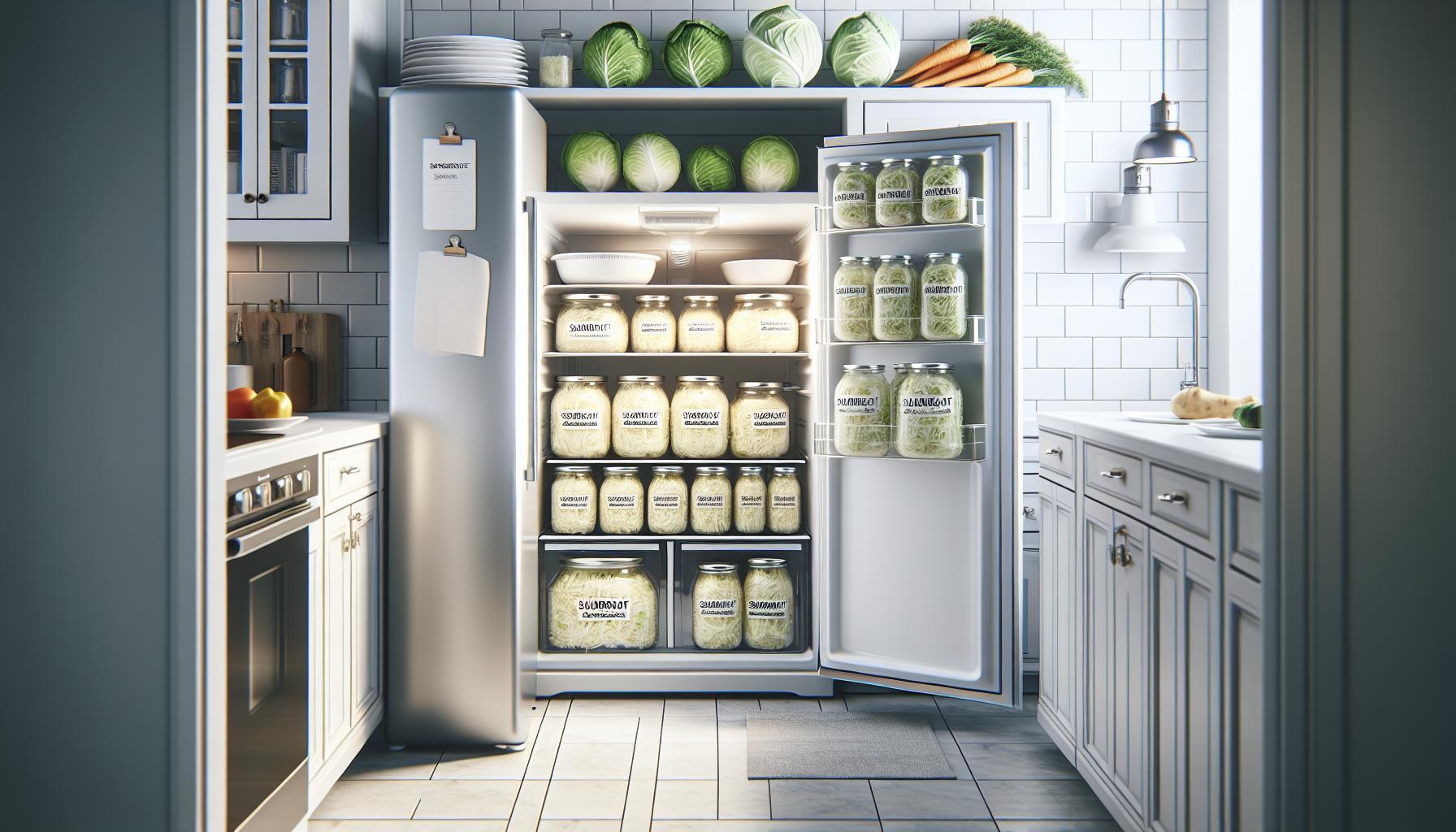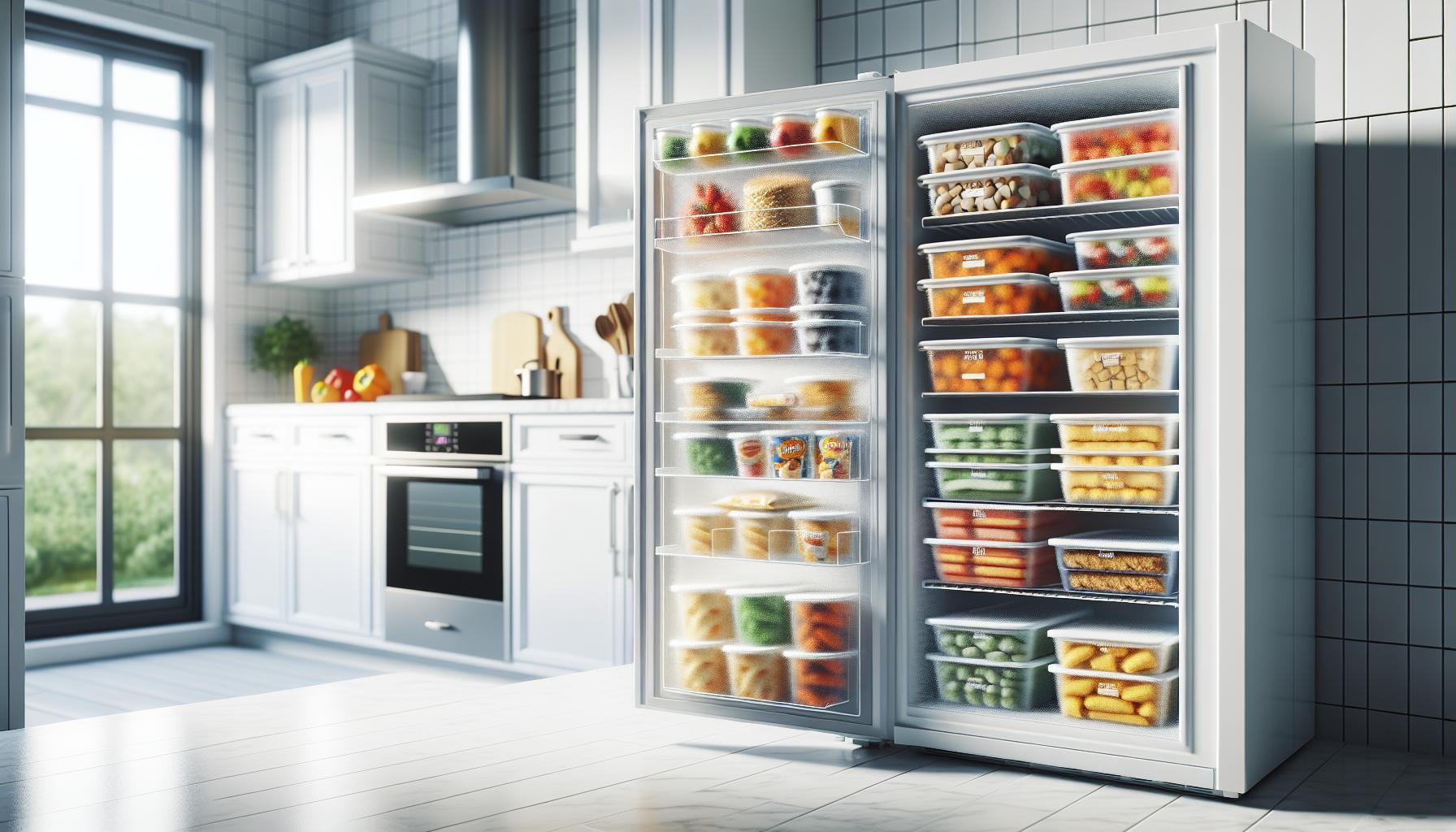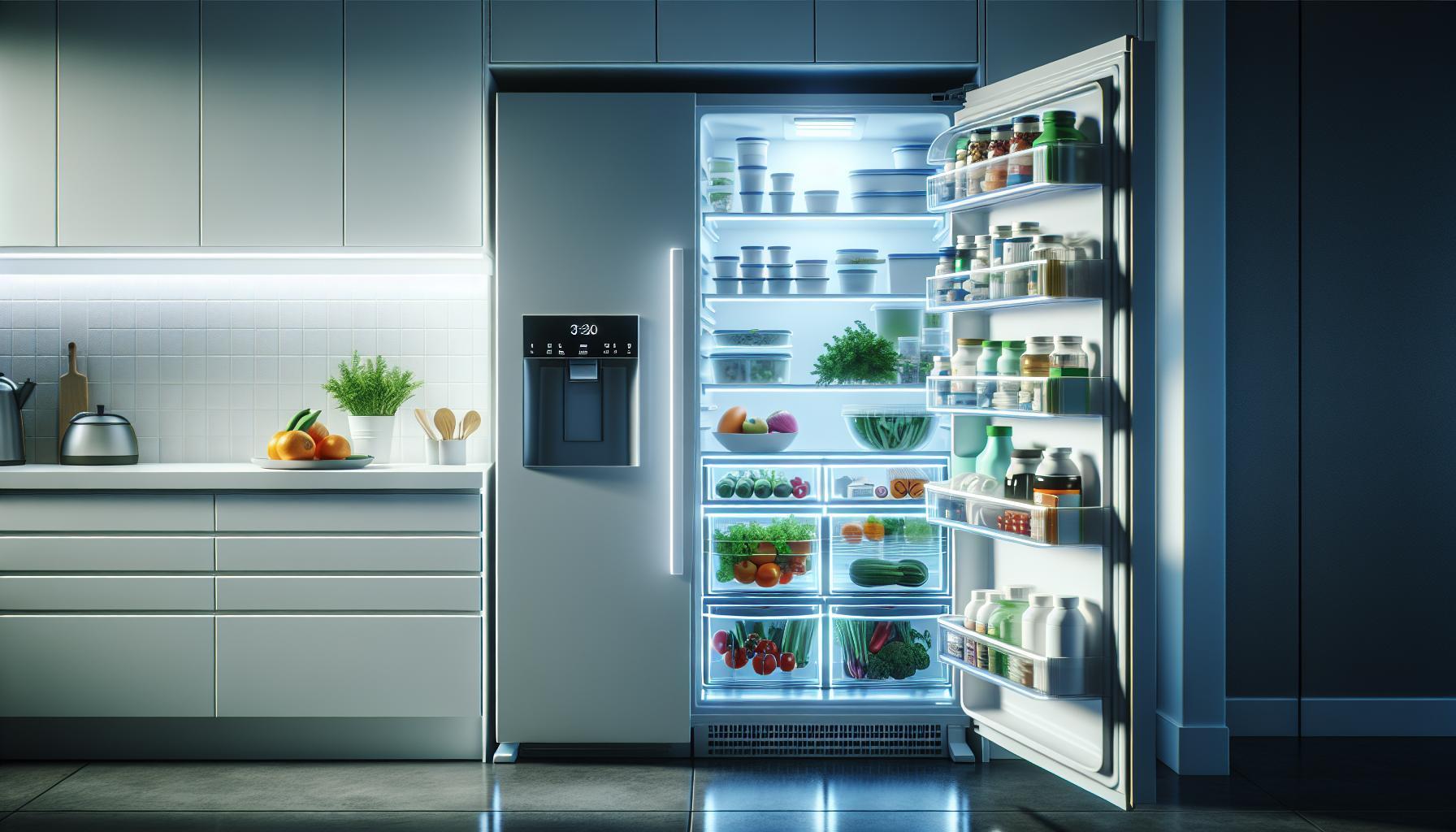Did you know that improperly stored scrambled eggs can pose health risks? As a beloved breakfast staple, scrambled eggs not only delight our taste buds but also warrant our attention when it comes to food safety. Understanding how long scrambled eggs last in the fridge is crucial to preventing foodborne illnesses and ensuring you enjoy your meals safely.
For many, breakfast is a rushed affair, and leftovers often linger in the fridge longer than they should. To keep your breakfasts safe and delicious, it’s essential to know the proper storage techniques and timeframes for your scrambled eggs. This guide will provide you with all the necessary information about how long your scrambled eggs can be stored and best practices for keeping them fresh. By following these tips, you can feel confident enjoying your morning favorites without worry.
How Long Can You Store Scrambled Eggs in the Fridge?
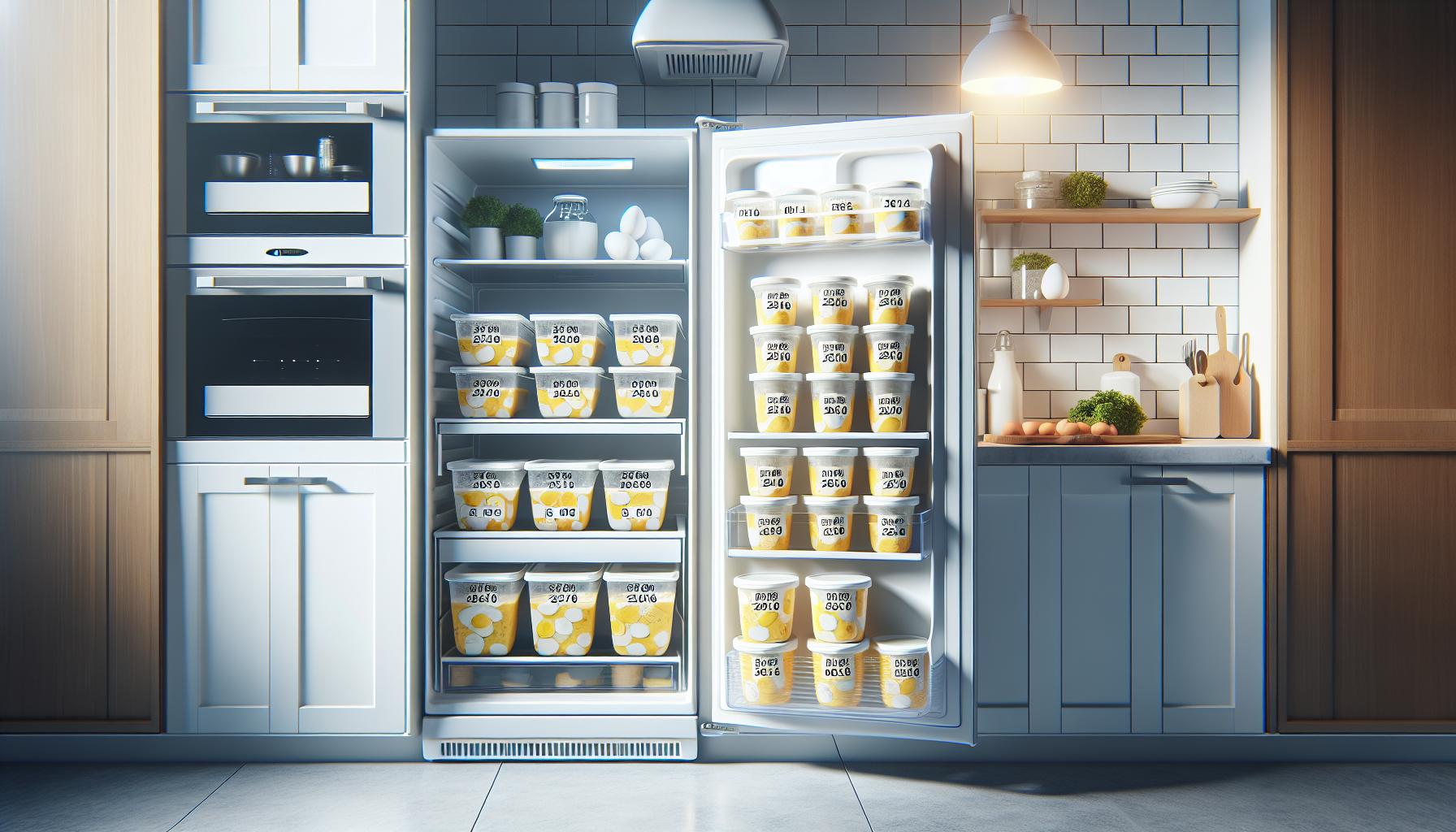
Scrambled eggs are a delicious and versatile dish that can be enjoyed at any meal, but knowing how long they can be safely stored in the fridge is crucial for food safety. Generally, cooked scrambled eggs can remain fresh in your refrigerator for about 3 to 4 days. It’s essential to store them properly to maintain their quality and ensure they are safe to consume.
To extend the freshness of your scrambled eggs, ensure they are placed in an airtight container immediately after cooking. This not only prevents them from absorbing odors from other foods but also minimizes the risk of bacterial contamination. When you’re ready to eat them, always give them a quick visual and smell inspection; if they appear discolored or have an off smell, it’s best to discard them.
If you find yourself with leftover scrambled eggs often, consider meal prepping in smaller batches or freezing them for longer storage. While they can last in the fridge for a short time, their quality diminishes over time, so consume them within the recommended timeframe for maximum enjoyment and safety.
Ideal Storage Conditions for Scrambled Eggs
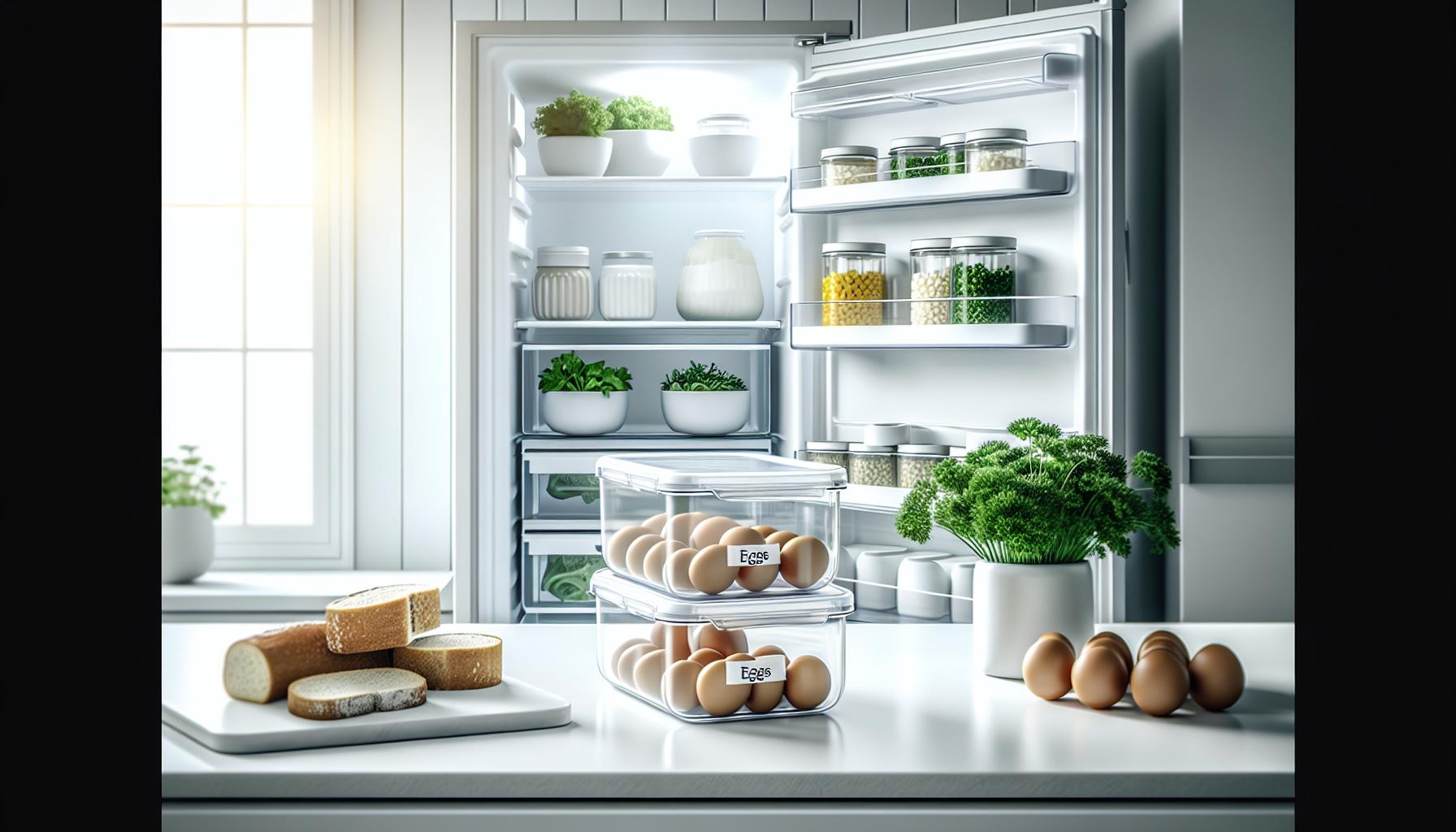
To ensure optimal freshness and safety when storing scrambled eggs, it’s essential to create the right environment right from the moment they cool down. After cooking, allow your scrambled eggs to cool at room temperature for no more than two hours. Once cooled, transfer them into an airtight container; this step prevents the eggs from absorbing odors in the fridge and helps keep moisture in, making your leftovers more enjoyable when reheated.
The temperature of your refrigerator plays a crucial role in the longevity of scrambled eggs. Make sure your fridge is set to 40°F (4°C) or lower, as this temperature slows bacterial growth and preserves food quality. Maintaining a consistent temperature is important-avoid frequent opening of the fridge door, which can let in warmer air and compromise the food inside.
For best practices, consider dividing scrambled eggs into smaller portion sizes before storing. This way, you only need to reheat what you plan to consume at one time, minimizing the risk of bacterial contamination through repeated heating and cooling. Always remember to label the container with the date of cooking to monitor freshness, ensuring you enjoy your scrambled eggs within the recommended 3 to 4 days for peak quality and safety.
Signs Your Scrambled Eggs Have Gone Bad
When it comes to maintaining the quality of your scrambled eggs, knowing the signs that indicate they’ve gone bad is crucial for both safety and enjoyment. Cooked scrambled eggs should be visually appealing, aromatic, and have a pleasant texture. However, several indicators can reveal that they are no longer safe to eat.
One of the primary signs to look for is a change in color. Fresh scrambled eggs are usually a light yellow or pale golden hue. If they start to display a gray or dull appearance, this could suggest spoilage. Additionally, a rancid or off-putting smell is a clear warning sign. Fresh scrambled eggs should emit a mild, savory aroma, whereas a sour or unpleasant scent indicates that bacterial growth may have occurred.
Texture is also a crucial factor in determining the freshness of scrambled eggs. They should remain moist and fluffy. If you notice an unusually dry or slimy consistency, it’s time to discard them. Moreover, if any liquid separation occurs, where you see clear fluid pooling in the container, it’s best to err on the side of caution and throw the eggs away.
Finally, if your scrambled eggs have been stored for longer than the recommended timeframe of 3 to 4 days, even if they appear fine, it’s safer to discard them. Bacteria can develop without obvious signs, making it important to adhere to safe consumption timelines. By keeping a close eye on these indicators, you can enjoy your scrambled eggs without worry while ensuring your meals stay both delicious and safe.
Tips for Reheating Scrambled Eggs Safely
Reheating scrambled eggs requires special attention to ensure they remain safe and delicious. As with many leftover foods, the optimal method can prevent bacterial growth and maintain the quality of your meal. Scrambled eggs, when stored properly, can last for 3 to 4 days in the fridge, but once you’re ready to enjoy them again, reheating them correctly is essential.
To begin, remove the scrambled eggs from the refrigerator and let them sit at room temperature for about 10-15 minutes. This reduces the temperature difference between the eggs and the heat source, helping to heat them evenly. When it’s time to reheat, the best method is using gentle heat. You can use a microwave, but be cautious; microwaving on high can lead to rubbery eggs. Instead, try the following technique:
Microwave Method
- Place the scrambled eggs in a microwave-safe dish.
- Add a splash of milk or water to keep them moist. This addition helps to create steam, resulting in fluffier eggs.
- Cover the dish with a microwave-safe lid or damp paper towel to hold in moisture.
- Heat on medium power in 30-second intervals. Stir after each interval to ensure even heating, until they reach the desired temperature.
Alternatively, if you prefer a stovetop approach, follow these steps for a method that can yield better texture:
Stovetop Method
- Place a non-stick skillet over low heat and add a small pat of butter or a drizzle of oil.
- Once the butter melts, add the scrambled eggs.
- Stir gently and frequently with a spatula. Heat until warmed through, taking care not to overcook, which can lead to dryness.
Regardless of the method you choose, ensure that the internal temperature of the scrambled eggs reaches at least 165°F (74°C) to ensure food safety. With these methods, you can enjoy your leftovers without sacrificing flavor or texture, creating a satisfying meal that’s both safe and enjoyable.
Storing Scrambled Eggs: Best Practices
Storing scrambled eggs properly is crucial to maintaining their taste and safety. Scrambled eggs, when made fresh, have a delightful texture and flavor that can be preserved by following correct storage practices. The key is to minimize the time they spend in the danger zone – between 40°F (4°C) and 140°F (60°C) – where bacteria can thrive.
To start, allow any leftover scrambled eggs to cool slightly before transferring them to a suitable storage container. It’s best to use airtight containers, as they will protect the eggs from odors in the fridge and limit moisture loss. Glass or plastic containers with tight-fitting lids work well, and it’s advisable to avoid leaving them in the pan they were cooked in. Once stored, keep the scrambled eggs in the refrigerator, where they can safely last for 3 to 4 days.
For optimal freshness, keep eggs at the back of the fridge, where temperatures are most consistent, rather than in the door. Consider labeling your containers with the date they were made to easily track their freshness. If you don’t plan to consume your leftover scrambled eggs within this timeframe, freezing is a viable alternative. When ready to eat, they can be thawed in the refrigerator overnight and reheated using gentle methods to revive their original texture.
By following these simple storage guidelines, you not only ensure food safety but also keep your scrambled eggs flavorful and enjoyable, making breakfast pleasant every time.
Can You Freeze Scrambled Eggs?
There’s great news for breakfast lovers: scrambled eggs can be frozen! This option allows you to prolong the enjoyment of this versatile dish without sacrificing flavor or safety. Freezing scrambled eggs not only helps you reduce food waste but also enables you to have a nutritious meal ready at a moment’s notice. Follow these guidelines to ensure the best results.
To freeze scrambled eggs effectively, start by letting them cool to room temperature after cooking. Then, portion them into freezer-safe containers or resealable plastic bags. Make sure to remove as much air as possible from bags to prevent freezer burn, which can affect taste and texture. Label the containers or bags with the date of freezing; properly stored, scrambled eggs can last up to six months in the freezer. For optimal results, keeping them at a consistent temperature of 0°F (-18°C) or lower is key.
When it’s time to enjoy your frozen scrambled eggs, the proper thawing technique is essential. Move them from the freezer to the refrigerator and let them thaw overnight. This gradual process helps maintain their texture. If you need them sooner, you can use the defrost setting on your microwave, but be cautious to prevent cooking them during the process. Once thawed, reheat gently on the stovetop or in the microwave, adding a splash of milk or a bit of butter to restore creaminess and enhance flavor. Avoid reheating them at high temperatures, as this can lead to a rubbery texture.
By embracing freezing, you can always have scrambled eggs on hand, ensuring that a quick, delicious, and safe breakfast is never far away. This convenient method will transform your meal prep routine and keep breakfast delicious!
Nutrition and Safety: The Science Behind Egg Storage
Storing scrambled eggs correctly is essential for maintaining both their flavor and safety. This dish, while delicious and convenient, can pose a risk if not handled properly. Scrambled eggs should ideally be eaten within three to four days when stored in the refrigerator. To ensure they stay fresh and safe for consumption, the storage conditions play a pivotal role. The eggs should be placed in an airtight container, preventing exposure to air and moisture, both of which can lead to spoilage.
In terms of nutrition, eggs are a rich source of protein, vitamins, and minerals, which makes their proper storage crucial for keeping their nutritional benefits intact. The presence of moisture in scrambled eggs can create an environment conducive to bacterial growth, especially Salmonella, which can thrive at improper temperatures. To keep scrambled eggs safe, they should be stored promptly after cooking-ideally within two hours-to minimize the risk of bacteria multiplying.
Understanding the signs of spoilage can help prevent foodborne illnesses. Check for off-smells, changes in texture, or discoloration. If the eggs appear watery or develop a sour odor, it’s a clear indication that they should not be consumed. Always reheat scrambled eggs to a minimum internal temperature of 165°F (74°C) before eating to ensure any potential bacteria are killed and enjoyed in a deliciously safe manner.
Making informed decisions about egg storage can significantly enhance both safety and enjoyment. By following simple guidelines regarding storage times, temperatures, and noting signs of spoilage, you can keep your scrambled eggs not only safe to eat but also as nutritious as possible.
Common Mistakes When Storing Scrambled Eggs
Storing scrambled eggs may seem straightforward, but there are several common missteps that can compromise both their safety and quality. One of the biggest mistakes is waiting too long to refrigerate cooked scrambled eggs. Ideally, these should be stored within two hours after cooking. Leaving them out longer increases the risk of bacterial growth, such as Salmonella, which thrives in warmer conditions.
Another prevalent error is using the wrong type of container. Many people opt for non-airtight containers, which expose scrambled eggs to air and moisture, leading to quicker spoilage. It’s best to use airtight containers designed for food storage that can seal out air, thus keeping moisture and contaminants at bay. Additionally, many inadvertently overfill their containers, allowing the contents to be squished together, which can alter the texture and potentially promote uneven cooling.
Failing to label and date leftovers can also lead to uncertainty about how long the eggs have been stored. This is particularly important when dealing with prepared foods, as it’s easy to forget when a dish was made. Without proper labeling, you may risk consuming scrambled eggs that are past their safe storage window. Finally, reinserting uneaten portions back into the original container can introduce bacteria from the serving utensils, which can also increase the risk of spoilage. Make a habit of serving only what you plan to eat and ensuring that any leftovers are promptly and safely stored.
By understanding these common mistakes, you can significantly enhance the freshness and safety of your scrambled eggs, ensuring they remain delicious and wholesome for your meals.
How to Extend the Shelf Life of Scrambled Eggs
To maximize the shelf life of scrambled eggs while ensuring they remain safe to eat, implementing a few strategic practices can make a significant difference. One of the most crucial steps is to store them immediately after cooking. Scrambled eggs can be safely kept in the refrigerator for up to 3 to 4 days when promptly refrigerated. If you want to use them beyond this time frame, consider freezing them, which can extend their life for up to 6 months. Here’s how to do it right.
Optimal Storage Techniques
To start, always use an airtight container for storage. This prevents exposure to air and moisture, which can lead to spoilage. If portioning your scrambled eggs, consider using smaller containers to minimize the impact of temperature changes each time you open the container. Additionally, ensuring your refrigerator is at the correct temperature (below 40°F or 4°C) is crucial. You can use a refrigerator thermometer for accuracy.
When you want to extend the shelf life of your scrambled eggs, labeling each container with the date of cooking is essential. This practice helps monitor their freshness and reduces the likelihood of eating spoiled eggs. If you notice any signs of spoilage-such as an off smell, change in color, or unusual texture-it’s best to discard them to avoid foodborne illness.
Freezing Scrambled Eggs
If you opt to freeze your scrambled eggs, cool them completely before transferring them to the freezer. Consider using freezer-safe bags or containers, and remember to remove as much air as possible before sealing. Dividing larger batches into single-serving portions can streamline the process of reheating, ensuring you only defrost what you need without repeated freeze-thaw cycles that could impact quality.
By following these careful storage methods and monitoring your scrambled eggs closely, you can greatly enhance their longevity, ensuring you enjoy this delicious and versatile dish safely for longer.
Understanding Egg Safety: Keep Your Breakfast Healthy
Eggs are a staple in many diets across the globe, appreciated for their versatility and nutritional benefits. However, ensuring that scrambled eggs remain safe to eat is paramount, as improper storage can lead to foodborne illnesses. Knowing how long scrambled eggs can be stored in the fridge-and the right practices for keeping them fresh-can significantly contribute to your health and well-being.
Storage temperature is crucial when it comes to egg safety. Scrambled eggs should always be refrigerated promptly after cooking to prevent bacterial growth. The ideal refrigerator temperature is below 40°F (4°C), which inhibits the growth of pathogens like Salmonella. As a rule of thumb, you should consume refrigerated scrambled eggs within 3 to 4 days. If you notice that the eggs have been in the fridge for longer than this timeframe, it’s safer to discard them, even if they appear to be fine.
When preparing and storing scrambled eggs, be mindful of your utensils and storage containers. Always use clean and sanitized tools to avoid cross-contamination. Once cooked, place scrambled eggs in an airtight container to protect them from air and moisture. It’s also advisable to label containers with the date they were cooked, making it easier to track freshness. Proper storage not only enhances safety but also maintains the quality and flavor of your eggs.
Pay attention to any signs of spoilage before consuming leftovers. Off odors, changes in texture, or discoloration are indicators that your scrambled eggs may have gone bad. Following these guidelines and being vigilant about food safety will help you enjoy your scrambled eggs while minimizing health risks. By incorporating safe food handling practices, you can savor this nutritious meal without worry, keeping your breakfast not only delicious but also healthy.
Storage Solutions: Containers That Preserve Freshness
Storing scrambled eggs properly is crucial to maintaining their quality and safety, prolonging their shelf life while preventing food waste. The choice of container significantly influences how long your scrambled eggs will last in the fridge. Using the right storage solutions can help lock in freshness and flavor, ensuring that your breakfast remains enjoyable for days after cooking.
Airtight containers are a fundamental choice for storing scrambled eggs. They create a moisture-proof barrier that prevents air exposure, which can lead to drying out and the absorption of odors from other foods. Look for containers made from durable materials such as glass or high-quality plastic. Glass containers are not only microwave-safe but also minimize the risk of staining or retaining odors, making them ideal for repeated use. Consider options with locking lids for extra security against spills and leaks.
In addition to airtight containers, you might also think about vacuum-sealing your scrambled eggs. This method removes air from the storage bag, significantly extending freshness and preventing freezer burn if you choose to freeze them. Vacuum-sealed bags can be easily labeled with dates, making it convenient to keep track of storage times.
For optimal organization, consider using compartmentalized meal prep containers for larger batches of scrambled eggs. These allow you to portion servings easily while keeping them separate. Always label your containers with the date of preparation; this simple step can make a significant difference in ensuring you consume your leftovers safely within the recommended 3 to 4 days.
With these storage solutions in mind, you can enjoy your scrambled eggs at their best while minimizing the risk of spoilage. Remember, the key factors in maintaining freshness are airtight sealing, appropriate materials, and proper labeling, so you can safely enjoy your meals without compromising taste or quality.
Frequently asked questions
Q: How can I tell if scrambled eggs in the fridge are bad?
A: To determine if scrambled eggs have gone bad, check for discoloration, off or sour smells, and a change in texture. If they appear watery or excessively dry, it’s best to discard them. Always trust your senses for freshness.
Q: Can you eat scrambled eggs after 5 days in the fridge?
A: It is not recommended to eat scrambled eggs after 5 days in the fridge. For optimal safety, consume them within 3 to 4 days to prevent foodborne illness. Always refrigerate leftovers promptly.
Q: What is the best way to reheat leftover scrambled eggs?
A: The best way to reheat leftover scrambled eggs is in a skillet over low heat, stirring gently until warmed through. Alternatively, microwave them in short bursts of 20 to 30 seconds, stirring in between. This helps avoid overcooking.
Q: Is it safe to store scrambled eggs in a plastic container?
A: Yes, it is safe to store scrambled eggs in a plastic container as long as it is airtight. Use a container that is BPA-free and microwave-safe if reheating will be done later. This helps maintain quality and prevent contamination.
Q: How long can scrambled eggs sit out before they go bad?
A: Scrambled eggs should not sit out at room temperature for more than 2 hours. After that, they can become a breeding ground for harmful bacteria. Always refrigerate leftovers promptly to ensure safety.
Q: Can I freeze scrambled eggs for later use?
A: Yes, you can freeze scrambled eggs. Allow them to cool, then place them in an airtight container or freezer bag. They can last in the freezer for up to 3 months. Thaw in the fridge before reheating.
Q: What temperature should scrambled eggs be stored at in the fridge?
A: Scrambled eggs should be stored at or below 40°F (4°C) in the fridge. This temperature inhibits the growth of bacteria, ensuring your breakfast remains safe to eat.
Q: Why do scrambled eggs sometimes become watery in the fridge?
A: Scrambled eggs can become watery in the fridge due to the release of moisture and condensation. This happens when they are stored improperly or for extended periods. To minimize this, seal them tightly in a container.
In Conclusion
To ensure your breakfast remains both delicious and safe, remember that scrambled eggs should be enjoyed within 3 to 4 days when stored properly in the fridge. Don’t hesitate to explore related topics like “The Best Way to Store Eggs” and “Understanding Egg Freshness” for more insights into maximizing your breakfast safety.
Now is the perfect time to take action-double-check your fridge and make sure your scrambled eggs are within that timeframe! For more tips on food safety and storage, consider signing up for our newsletter. We value your health and want to ensure you have the best food handling practices at your fingertips. Share your own experiences or ask questions in the comments below, and let’s keep the conversation going. Your safety is our priority; let’s make every breakfast a great one!

